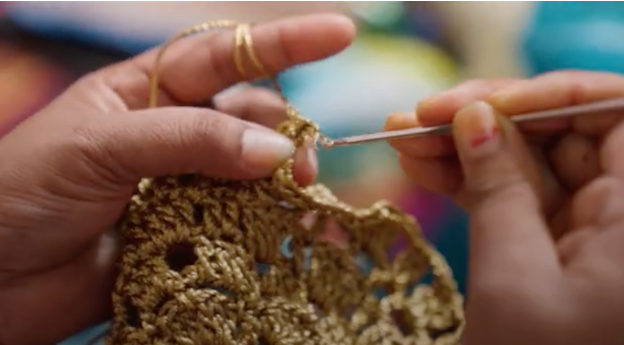How To Write An Appealing Grant Application
Aug 04, 2022 | Vaibhav Kumar
 Are you looking for ways to write an excellent grant application that can impress the assessors? The blog will guide you through the ways of writing such an appealing application and will take you through the dos and don'ts in such a proposal. Grant application is a proposal of procuring funds for a project with a defined deliverable or outcome.
Are you looking for ways to write an excellent grant application that can impress the assessors? The blog will guide you through the ways of writing such an appealing application and will take you through the dos and don'ts in such a proposal. Grant application is a proposal of procuring funds for a project with a defined deliverable or outcome.
Alignment
The first step should be to read and understand the type of applications, the organization you are applying to, funds. The proposal and the scope of the project you want the grant for, should be aligned with eligibility criterias of winning a grant from that organization and must not fall under the projects they do not fund. It is about aligning your project with the funding organization’s aims and remit. For instance, Innovate UK smart grant does not provide grants for marketing and advertisement of a pre-existing product but for research & development of a new product.
Which stage your project is in?
There are three main types of grant projects: feasibility, industrial research, and experimental development. Depending on the type, the amount of funding to be given is decided.
Feasibility (TRLs 0-3):
Starting point: an idea
Work to do: concept ideation, market research, fundamental principle testing (i.e. is this idea possible)
Industrial research (TRLs 3-5):
Starting point: basic proof of concept or fundamental principles proven
Work to do: core technology building, building first functional prototype and pre-user testing in a lab
Experimental development (TRLs 6+):
Starting point: working prototype complete
Work to do: user testing, minor extra features, pre-launch activities
Problem Statement
Now after fixing the alignment and deciding the stage of the project, let’s start writing the application.
Be it any project you are asking the grant for, it solves a problem. Defining the problem statement is crucial and this is the first thing any assessor reads. Though there will be many assessors, the focus is to create a good impression of your project in the eyes of the assessors. Firstly, you just write the problem you are solving and not the solution. Talk more about how the problem is a challenge when left unsolved, and can have repercussions. The best answers describe a substantial, unaddressed, ideally global problem in detail. Also, talk about why the problem has not yet been solved and what are the challenges associated with it. Adding references can be helpful. Eg. “the standard of sustainability reporting has largely remained the same year on year” (pwc, 2020). Talk about who is affected and how. Almost any improvement to a substantial problem will allow greater equality and inclusion for someone.
Solution
After writing an appealing problem statement, the assessors will be interested in knowing the solution you have. This is also a very important part where you start discussing your project and why you think this will work. While writing the solution keep in mind the problem statement defined and do not deviate. Writing the problem statement is always good before writing what solution you have. Next, mention strong points about why you think your solution is worthy. Once again, when writing about solutions keep in mind you have already stated the problem and you are just telling about your solution. Eg. The project will introduce the world's first collaborative software development platform where people can also connect over call directly. This will boost productivity by 100%.
Research
If you have done any research about your project, mentioning it can be of great help. Assessors would like to see how well your product fits in the market and also how much you know about your project. Quantifying figures is always better but in absence of proper citations, a rough estimate based on the current knowledge of the product is better than flat statements.
Research starts from defining research questions. It can be of two types: primary and secondary. In primary research, you yourself collect raw data and work on it to answer your research question; while in secondary research, you work on already collected data and previously done research. You might have to research the market size, competitors, impacts, etc. Knowing the market is important and equally important is quantifying it. Suppose you write: “The market is huge”, assessors might think the market is not good enough as the relevant data is not provided..
Resources
For secondary data and research you can take help from websites like Statistica, Data Gardener, Google Public Data, etc. Google Scholar can be of great help if you want to refer to research papers which is always a good source. Providing citations will make the application credible.
Also, while you research, make sure the project you are working on does not already have a patent. You can refer to Google Patents for this.
Based on the research work you have done so far and selecting the stage where your project falls, write about all that you have done. Include any customer research you have conducted, write the deliverables, etc. For eg. A survey on understanding the problems while developing software involving 1000+ developers conducted on Jan, 2020 suggested, collaboration is the main issue in the development process.
Impacts
In the research section only, we could have discussed measuring impact but it is a crucial part and becomes even more crucial when you are planning to secure a public grant.
Impacts can be majorly classified into three types (this is not an exhaustive list):
Economical: As the name suggests, talk about the impact your project has, in the economy. Time, money, value it is generating, new jobs created, how well your product is scalable to international markets. For Eg. The project directly supports 12 new jobs and has the potential to scale internationally which can do an addition of upto £. 35M to the GDP of the nation.
Environmental: Either write about the positive environmental impact your project creates or the negative impact it reduces or both. Eg. “Reduce office wastage where possible and recycle”, “Large batch shipping”, etc..
Social: Find whether your product is going to empower the public, improve health and/or safety, improve education, improve worker autonomy or working conditions, etc. Eg. Handmade sector is dominated by women and any improvisation made will ultimately support them
If impacts can be shown aligned with the country's goals and government initiatives, it is an added advantage and boosts your chance to win the grant. Look for policies and initiatives of the government which your project is aligned with. Eg. Our project is aligned with the country's aim to become net zero in carbon emissions by 2040.
Try to quantify impacts as much as possible. Mention at least one negative point out of all the impacts your project creates. Also, writing about what if you fail to receive this grant, can add value to your application. Eg. ModuleX would need to be removed from the product roadmap making rapid commercialisation significantly more challenging."
Value Proposition & USP
A value proposition is a statement that a company uses to outline why a consumer should buy their product or use their service. For this, you have put yourself in your customers’ shoes and think why a customer would be interested in your product. What value you are generating for that customer. This is purely customer centric. The value should match the price they will pay so think whether they will easily pay for your product. Eg. Rural Handmade is a B2B supply chain business of handmade goods. The project delivers a seamless way to communicate buyers’ personalized demand to suppliers. The handmade sector is highly fragmented and the problem of personalisation makes it difficult to manage the orders online. The interest is two-fold: buyers’ happy with their orders and suppliers will be willing to sell online more with us for a nominal fee.
USP is a unique selling proposition which is that one thing that makes your product better than your competitors. Remember that, saying your product has no competitor is not a wise choice. Assessors might think that no one is interested in your product and it is not worth it. What you have to do is, mention a few competitors and write your strong points why you think your product is special than theirs. Also, mention how your product is not easily replicable and what measures you have taken for this. Eg. Unlike CompetitorX/CompetitorY/CompetitorZ, CompanyX enables a participatory approach; users can upload photos of accessories they like to source similar secondhand items.
Market
We discussed in the research section that writing about the market and quantifying it is important. We think that this part should be elaborated more. Research on the market should be extensive and worthwhile not only considering the grant application but also for the product you plan to develop.
For understanding and writing about the market, follow these steps:
Firstly, write the addressable market customer which includes every customer in your target market. Eg. If you sell a collaborative software solution, it could be “Developers”, If you sell glucose monitoring software, it could be “Diabetics”.
Segment/Subdivide the customers. They could be segmented by: budget, geographical region, use-case, etc. Eg. Diabetics can be segmented by age/gender/occupation
Estimate the number of serviceable customers in your country and globally. Mention about how you calculated it. If country specific data is unavailable, use the global GDP ratio or market size ratio with your country.
Write CAGR. Compound Annual Growth Rate.
An estimation of market penetration.
Write the route to the market. In other words, how you'll achieve widespread adoption of your product. Eg. CompX will utilize mail/print through advisor connections with HomeInstead/AgeUK/McCarthy&Stone/NHSR, totalling 100,000+ reach (conversion 10%/CAC £10). By year 3, 80% of leads via Facebook/Instagram (spend raised through year-2 Angel investment; conversion 5%/CAC £15). By year 4, 30% sales in Europe/US."
Mention about the main players in the market. This step is focused on competing companies and not competing products. Your product might be a complete innovation or an addition to the present technology. Eg. “The market is mainly dominated by CompA and CompB with 75% total share”, otherwise you can also write, “the market has currently no dominant player as the sector is highly fragmented”.
Finally write about the primary barriers, if any, and how you will mitigate it. It may include technical challenges, difficulty in finding key staff/partners. Eg. “requirement for highly specialized staff combining manufacturing engineering, material science and physics. This is mitigated by access to Birmingham University’s academic research team."
Your Team
A good project needs a good team to be successful. Mention about the key team members, who they are, their qualification, their work experiences, and what his/her role is going to be, in your project. Eg. Person1 is the founder & CEO of CompanyX and has an experience of 20+ years will be managing the project as CEO and project lead, Person2 is a software developer with 15+ years of experience previously working at companies like Google, Microsoft and will lead the development process in the project, etc.
Mention about the diversity initiatives you have taken, if any. Also write if you are planning to hire more people apart from the ones discussed.
Next, let’s talk about the management of your project. What will be your approach to project management? Identify any major tools, approaches and/or methods you will use to secure a successful project outcome. Eg. "XYZ uses an Agile methodology led by Matt, certified Scrum Master, with fortnightly sprints tracked using Jira. Risks are managed compliant with ISO 31000 and Jill (CFO) will manage finances."
Describe your past mentors, partnerships and advisory networks for this project and existing and future networks that you plan to access during this project and beyond.
Work Packages & Risk Registers
Work packages are a way of breaking a project down into smaller parts, each of which will have its own deliverable (or output). For instance, if you are developing a new machine learning model, it can be broken down to:
Data Collection & Cleaning
Model Training & Selection (Choosing the best model)
Estimation & Testing, etc.
Divide the work, time and cost between the different packages and further subdivide the packages. Also, mention the dependencies of one package or subpackage on others. For instance, model selection is dependent on data collection and cleaning.
Now, let's talk about risks. You might be tempted to say that your project has no risk and think that assessors will give more scores, however, the opposite is true. Every project has some associated risk which usually applicants ignore and lose score in this section. Talk about risks and also the ways you have to address it. The best idea is creating a document where you talk about the risks and rate them, then talk about the steps you will take to reduce/eliminate it and then what is the risk rate. For instance, The above discussed machine learning can have a technical risk of poor prediction which you rate 8 (say) and then as a solution, you will do A/B testing first which will reduce the risk to 4 (say). You must be wondering, how to choose the exact number for rating risk, right? Well do not worry, make an educated guess and this is enough. Also, classifying risks as P - Prevent; A - Accept; R - Reduce; C - Contingency; T - Transfer based on the nature of the risk will add value.
To simplify the things further, we divide the risk into 4 categories:
Technical risks: Eg. Performance slowdown issues due to scalability, response failure of a software, etc.
managerial risks: Eg. Poor control of resources, poor timeline, etc.
Commercial risks: Eg. Competitors delivering similar products, customer hesitation while buying your product, etc.
Environmental risks: Eg. Massive energy use, wastage of equipments, etc.
Divide the risks into these 4 buckets where you write more of technical risks and 1-2 environmental risks is good enough.
Costs & Funding
It was overwhelming so far. Finally, you talk about the costs associated with your project and the funding you need. You might wonder how much you should ask for. The best is, know about the minimum and maximum they provide and take a number which is above average but not too close to the maximum they can offer. For Instance, if you can raise funds between 100K and 500K, choose around 350K as the safe number. Your end goal is securing more funds but asking too much can become a mistake to finally lose out on a good project.
Costs can be broken down to the following depending on the calculation:
Labor & Overheads
Subcontractors
Materials
Capex
Travel
Other
Going further, you talk about why you have chosen the particular organization you are applying to. Anyone you are applying the grant proposal to, would be interested to know the reason for choosing them. Here, you can talk about the reputation of that organization, how it will help you for future funding rounds, and why they are better than others. Eg. OrgX is a well-reputed organization and this grant will make future rounds of funding easy. Also, talking about if the project gets abandoned due to some unforeseen circumstances, where will the funds be used.
For now, you have answered the question of why you have chosen them, now, tell them why you are most appropriate for this fund. You have already discussed a lot about your project; bring them in confidence that the funds will be utilized in the most efficient way. Here, consider yourself competing with someone with the same project, now tell them why you are the best. Mention all advantages or connections you have or anything by which you can reduce the cost. For instance, for the A/B testing purposes, if a firm is applying for grants and has a running business, they have a clear advantage. If you have some connections, subcontractors or partners helping you in this project for free or at reduced charges than market, mention it. Eg. SubcontractorY negotiated to 80% normal cost via a long standing working relationship.
General Suggestions
Keep your application within the word limit and try to fit as much information as possible.
Quantify your answers. Assessors love numbers. For instance, if you write that there will be a substantial increase in revenue with this project, assessors might think the increase is merely 1-2%.
Do not ignore easy sections as you can score more there, which can make or break the situation.
Look for government policies or initiatives that are aligned with your project as it adds weight to your application.
Review your answers and fix the issues as you find them.
Keep your files arranged. We suggest you divide all the answers into separate documents and save all of them online.
Manage the time. Keep the deadline in mind while writing the proposal.
Go through their grant page thoroughly and consider everything they have mentioned for grant.
Recommended








